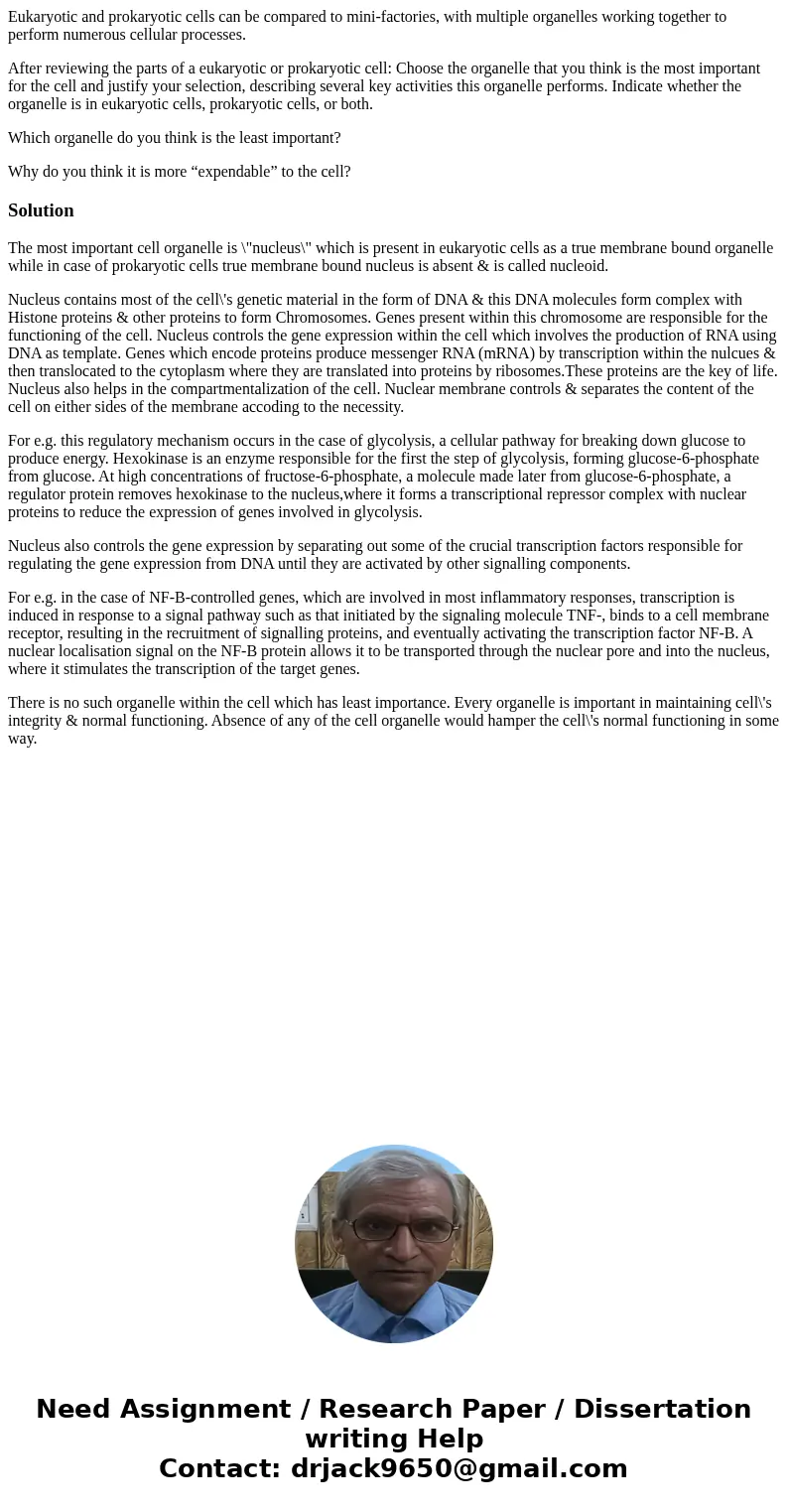Eukaryotic and prokaryotic cells can be compared to minifact
Eukaryotic and prokaryotic cells can be compared to mini-factories, with multiple organelles working together to perform numerous cellular processes.
After reviewing the parts of a eukaryotic or prokaryotic cell: Choose the organelle that you think is the most important for the cell and justify your selection, describing several key activities this organelle performs. Indicate whether the organelle is in eukaryotic cells, prokaryotic cells, or both.
Which organelle do you think is the least important?
Why do you think it is more “expendable” to the cell?
Solution
The most important cell organelle is \"nucleus\" which is present in eukaryotic cells as a true membrane bound organelle while in case of prokaryotic cells true membrane bound nucleus is absent & is called nucleoid.
Nucleus contains most of the cell\'s genetic material in the form of DNA & this DNA molecules form complex with Histone proteins & other proteins to form Chromosomes. Genes present within this chromosome are responsible for the functioning of the cell. Nucleus controls the gene expression within the cell which involves the production of RNA using DNA as template. Genes which encode proteins produce messenger RNA (mRNA) by transcription within the nulcues & then translocated to the cytoplasm where they are translated into proteins by ribosomes.These proteins are the key of life. Nucleus also helps in the compartmentalization of the cell. Nuclear membrane controls & separates the content of the cell on either sides of the membrane accoding to the necessity.
For e.g. this regulatory mechanism occurs in the case of glycolysis, a cellular pathway for breaking down glucose to produce energy. Hexokinase is an enzyme responsible for the first the step of glycolysis, forming glucose-6-phosphate from glucose. At high concentrations of fructose-6-phosphate, a molecule made later from glucose-6-phosphate, a regulator protein removes hexokinase to the nucleus,where it forms a transcriptional repressor complex with nuclear proteins to reduce the expression of genes involved in glycolysis.
Nucleus also controls the gene expression by separating out some of the crucial transcription factors responsible for regulating the gene expression from DNA until they are activated by other signalling components.
For e.g. in the case of NF-B-controlled genes, which are involved in most inflammatory responses, transcription is induced in response to a signal pathway such as that initiated by the signaling molecule TNF-, binds to a cell membrane receptor, resulting in the recruitment of signalling proteins, and eventually activating the transcription factor NF-B. A nuclear localisation signal on the NF-B protein allows it to be transported through the nuclear pore and into the nucleus, where it stimulates the transcription of the target genes.
There is no such organelle within the cell which has least importance. Every organelle is important in maintaining cell\'s integrity & normal functioning. Absence of any of the cell organelle would hamper the cell\'s normal functioning in some way.

 Homework Sourse
Homework Sourse